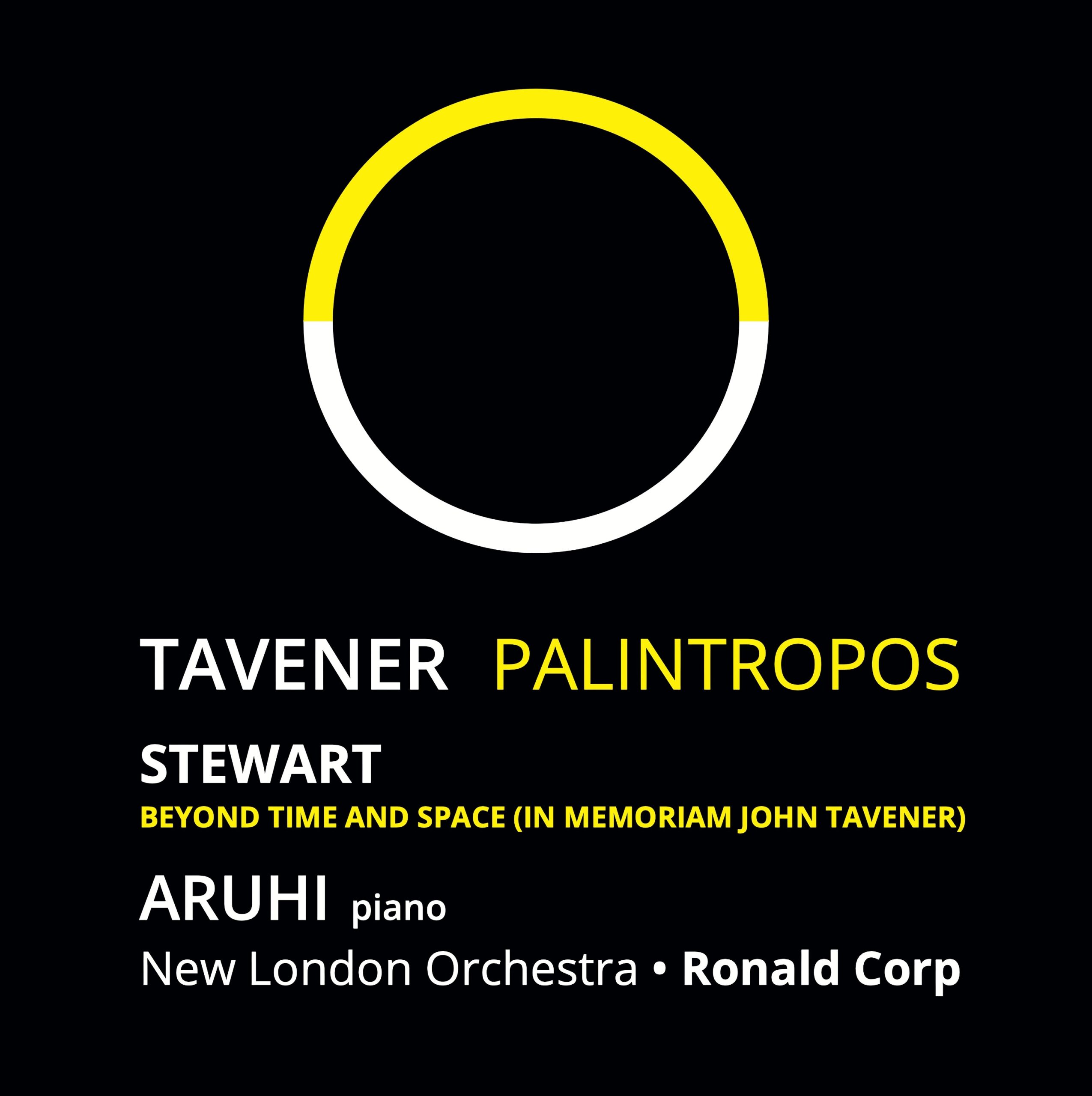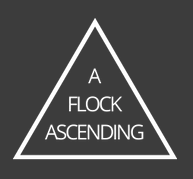Genesis of the Project
I first heard this Palintropos when I was studying with John in 1979 and have always been surprised that it was never taken taken up by many pianist over the 43 years since its composition, and even more surprised that it was never commercially recorded.

project to record it started over 2 years ago and was finally recorded in January 2020 with the post production completed during the 2020 global lockdown.
The project began life on a suggestion from a friend that I compose a piece for the talented Japanese pianist ARUHI, and it was whilst writing the piece Beyond Time and Space (which is dedicated to the memory of John Tavener) that the idea of recording Palintropos came to me. It was a crazy idea that seemed impossible to achieve given the cost involved in realising it, but encouraged by others it began to take shape slowly over the following two years. Finding the funding was the biggest obstacle. After an unfruitful year trying to find sponsorship I decided to turned to a mixture of crowdfunding and private funding. Finally, with the funding in place, I setup the record label A Flock Ascending, not only as vehicle to launch the recording but also to promote, via further recordings, emerging talent in the world of classical music.

It was an extraordinary journey for sure, from finding the right conductor and orchestra and the recording team (headed by award winning Abbey Road producer Andrew Walter), through to choosing the right piano at Steinway Hall in London and the right location for the recording. I finally settled on the amazing acoustics of St. Jude’s On The Hill, West Hampstead, where numerous award winning classical records have been made. among them: Hildegard von Bingen Feather on the Breath of God, Arvo Pärt’s Passio and Tavener’s Icon of Light with The Sixteen. I had also heard Leif Ove Andnes wonderful recording of Beethoven’s Piano Concertos 2 & 4 in his Beethoven Journey cycle.
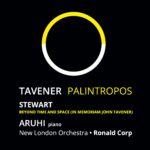 The recording was made just weeks before the national lockdown. All the post production apart from the mixing and mastering (Andrew Walter and Paul Baily) was undertaken remotely. The hardest task was making the recording of Beyond Time and Space; which was achieved via remote collaboration from my home in Brighton and ARUHI’s in Tokyo which was a real challenge. Once we had it I sent it to Andrew Walter and Paul Baily for final mixing and mastering. The disc was finally released on the 23rd of October 2020.
The recording was made just weeks before the national lockdown. All the post production apart from the mixing and mastering (Andrew Walter and Paul Baily) was undertaken remotely. The hardest task was making the recording of Beyond Time and Space; which was achieved via remote collaboration from my home in Brighton and ARUHI’s in Tokyo which was a real challenge. Once we had it I sent it to Andrew Walter and Paul Baily for final mixing and mastering. The disc was finally released on the 23rd of October 2020.
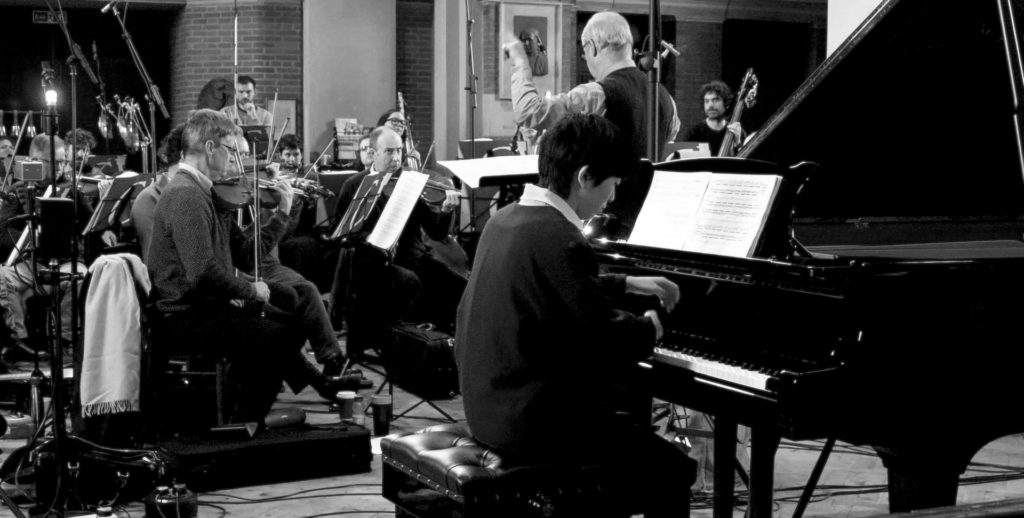
John Tavener's Palintropos: A Personal Memoir
As a student, back in 1979 I had many conversations with John about Palintropos. It’s impact on me at the first performance was considerable, and the work fascinated me within the context of his other works of this period. Was it secular or sacred? As Tavener said “Palintropos is the only piece of mine that ever came near to being a Debussyan tone poem.” The answer of course, as with practically all of Tavener’s music, is that it is sacred. What essentially interested Tavener when choosing the title was the idea of something ‘turning back on itself’. One could interpret this as the progress of the changing colours over the sea during a single day as he sat on on the island of Patmos, but as Tavener told me, it was one of the first works that emerged from his conversion to the Orthodox religion in 1977 and he often mentioned the Orthodox belief that man and nature are essentially divine on account of the incarnation. Seen from that perspective Palintropos can viewed as something whole, separated from its origin and returning once again to its original state. This implies oscillation which is reflected in the overall musical structure of the work. At that time Tavener became very interested in the writings of Carl Jung and in his discussions with me spoke about Jung’s ideas on enantiodromia. Carl Jung defines enantiodromia as:
“the emergence of the unconscious opposite in the course of time. This characteristic phenomenon practically always occurs when an extreme, one-sided tendency dominates conscious life; in time an equally powerful counterposition is built up which first inhibits the conscious performance and subsequently breaks through the conscious control.” The same thing can be found in nature where any extreme is ultimately opposed by a system of order in order to restore balance. In Palintropos this can be evidenced by the violently contrasting sections (columns of sound) that alternate between the ‘reflective and the dynamic’. In the principles of traditional Chinese religion – as in Taoism and yin-yang – the central idea of the I Ching is that yang becomes yin when they have reached their extreme, and vice versa”.
This concept is implied also in Heraclitus’s writings. Heraclitus says
“cold things warm, warm things cool, wet things dry and parched things get wet.”
The dynamic motion back and forth between the two – especially by opposition and conflict.
Analysis and Structure of Palintropos
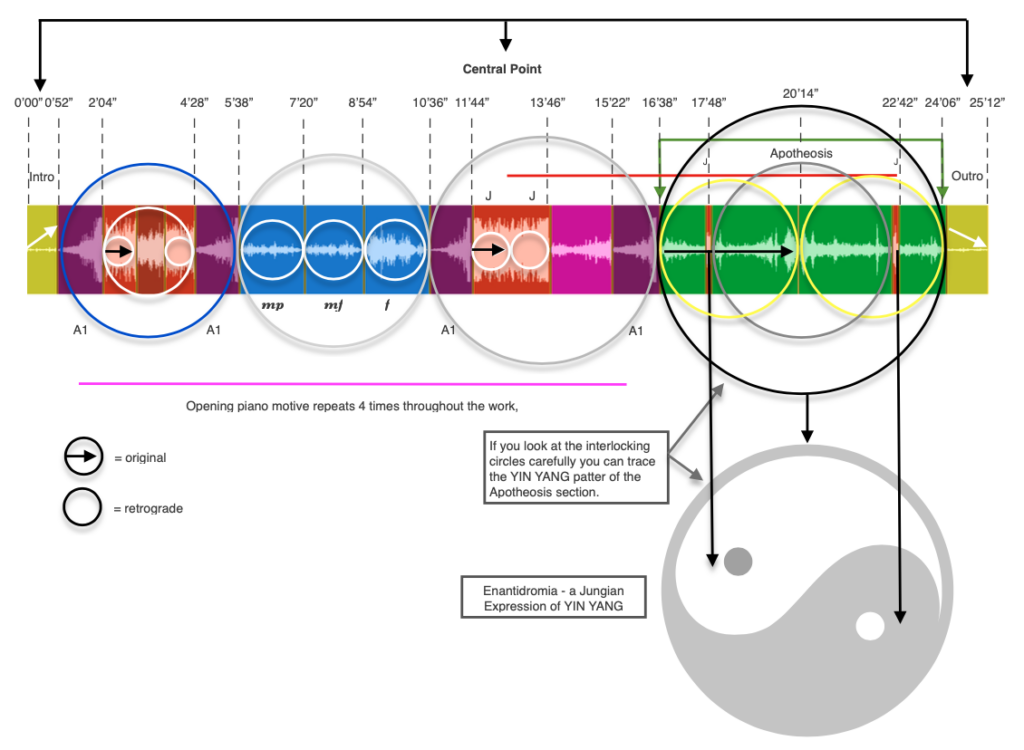
Palintropos - Logos & Tao
Logos
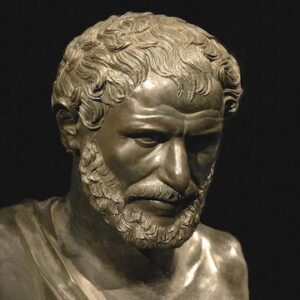 From my conversations with Tavener it was clear that the metaphysical aspects of Palintropos run deep throughout its construction and its concept. There are several layers of the concept behind the work, ranging from the simple idea of the dramatic changing colours throughout the day that Tavener experienced sitting atop the island of Patmos, through to the idea of the duality of man as nature and the divine. However, when I asked Tavener about the choice of title he admitted that the idea of the title came from Heraclitus’ notion of Logos as a divine law (or God) which governs the universe and the flow of change in reality or ‘man as nature’. Logos can be interpreted as ‘word’ or indeed ‘story’. Most importantly it’s about duality. Heraclitus said “everthing changes or is in the process of changing” and this, coupled with the process of ‘turning back’ is constant in Palintropos.
From my conversations with Tavener it was clear that the metaphysical aspects of Palintropos run deep throughout its construction and its concept. There are several layers of the concept behind the work, ranging from the simple idea of the dramatic changing colours throughout the day that Tavener experienced sitting atop the island of Patmos, through to the idea of the duality of man as nature and the divine. However, when I asked Tavener about the choice of title he admitted that the idea of the title came from Heraclitus’ notion of Logos as a divine law (or God) which governs the universe and the flow of change in reality or ‘man as nature’. Logos can be interpreted as ‘word’ or indeed ‘story’. Most importantly it’s about duality. Heraclitus said “everthing changes or is in the process of changing” and this, coupled with the process of ‘turning back’ is constant in Palintropos.
Diogenes Laërtius summarizing Heraclitus’s philosophy, as; “All things come into being by conflict of opposites, and the sum of things (τὰ ὅλα ta hola (“the whole”)) flows like a stream. Like Anaximander, Heraclitus also believed in a unity of opposites and all existing entities by pairs of contrary properties.”There is a harmony in the bending back (παλίντροπος palintropos) as in the case of the bow and the lyre”. Heraclitus also remarked “the bow’s name is life, though its work is death. The “strife of opposites” is a harmony and therefore that the summation of wisdom is not a comprehension of many things, but the perception of the underlying unity of opposites in conflict.
When Heraclitus said “I searched myself” it could be said that rather than an attempt to understand his inner self it was perhaps a starting point in the epistemological process of understanding the cosmic reality.
Tao
Although Tavener and I never talked about the concept of the Tao in relation to Palintropos, over the intervening years I have come to realise that the ideas behind the work have a unique connection with certain aspects of The Tao. Therefore the following is conjecture.
“The nameless is the origin of heaven and earth” … “The space between heaven and earth is just like a bellows” … “Heaven is long lasting, earth is enduring”. Lao Tzu.
“Is and Isn’t produce each other. Hard depends on easy, Long is tested by short, High is determined by low, Sound is harmonized by voice, After is followed by before.” Lao-Tzu, Tao Te Ching.
The pairs of opposites implied by the symbol of Yin Yang are not just juxtaposed and in contrast but related to each other.
Notwithstanding that the writings of Heraclitus and Lao-Tzu are separated both in space and time it could be conjectured that the fundamental principle of cosmic wisdom is governed by dynamic oppositions which are not in conflict but rather define an underlying balance of harmony in the universal order.
